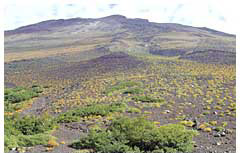|
|
|
A symphony of plants : Mt. Fuji's Nature : top
|
||
|
||
A symphony of plants |
||
Vertical distribution of plants according to altitude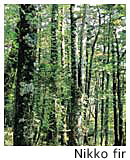 An exceptional distribution of plants is formed on Mt. Fuji, the highest mountain in Japan, from the alpine belt over 2,500 meters to the hillside belt below 700 meters. The temperature decreases by 0.6oC with each 100 meter increase in elevation. Nearly half of the plants that live in Shizuoka Prefecture higher than ferns are represented, including various rare and valuable species. An exceptional distribution of plants is formed on Mt. Fuji, the highest mountain in Japan, from the alpine belt over 2,500 meters to the hillside belt below 700 meters. The temperature decreases by 0.6oC with each 100 meter increase in elevation. Nearly half of the plants that live in Shizuoka Prefecture higher than ferns are represented, including various rare and valuable species.
|
||
|
Vertical distribution on the Shizuoka prefecture side (south-facing)
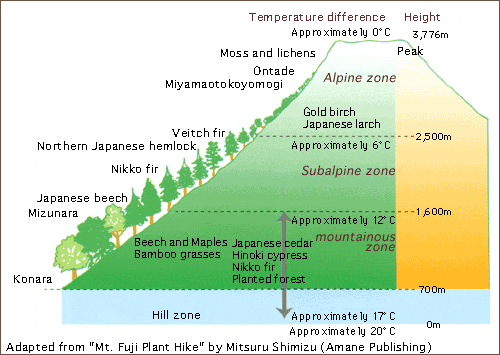
|
||
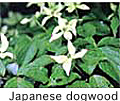 To nurture the magnificent nature and protect the wonderful scenery that Mt. Fuji gives us, each of us must think seriously and take action. To nurture the magnificent nature and protect the wonderful scenery that Mt. Fuji gives us, each of us must think seriously and take action.
{Source: The Nature and Blessings of Mt. Fuji (Shizuoka Prefecture)} |
||
|
For Those Climbing Mt. Fuji : Let's Enjoy Mt. Fuji : Mt. Fuji's Culture : Mt. Fuji's Nature : Japan's Heartland Establishment Aims : Country Code : Mt. Fuji Charter : Membership Information : Mt. Fuji Pins : Top |
||
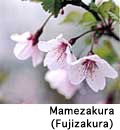 A single ecosystem is formed of living things, water, and soil through the interrelation of the small animals that live in the grass fields, forests, and near water and the birds and animals that prey on them. If one element is missing, the system collapses.
A single ecosystem is formed of living things, water, and soil through the interrelation of the small animals that live in the grass fields, forests, and near water and the birds and animals that prey on them. If one element is missing, the system collapses.